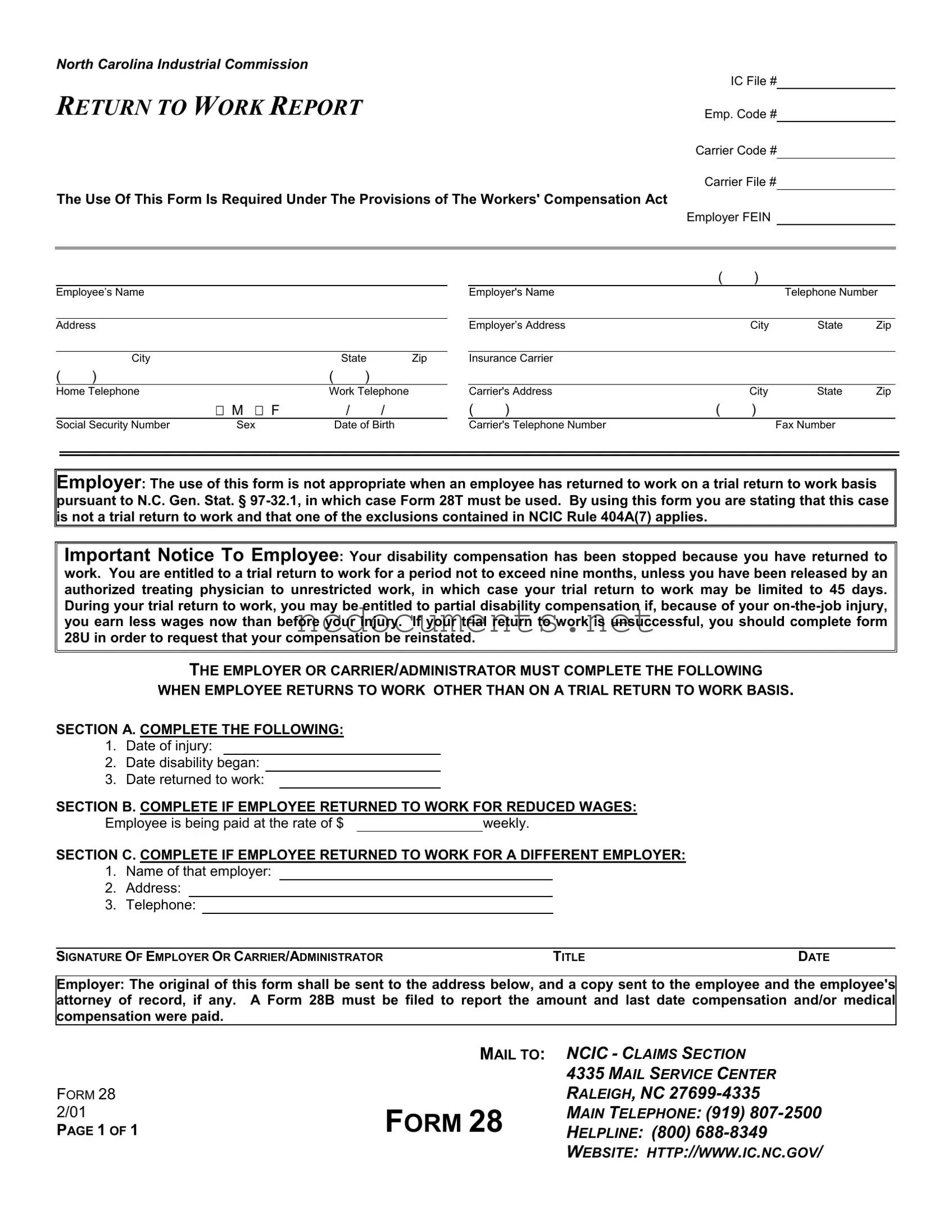Filling out the North Carolina 28 form can be straightforward, but many people make common mistakes that can delay the process or lead to complications. One frequent error is not providing complete information in the required fields. Each section is crucial, and missing details can result in the form being returned or rejected.
Another mistake is using the wrong form altogether. This form is specifically for reporting when an employee returns to work, but if the return is on a trial basis, Form 28T should be used instead. Failing to use the correct form can lead to misunderstandings regarding the employee's status.
People often overlook the importance of signatures. The form must be signed by the employer or the carrier/administrator. An unsigned form will not be processed, so it’s essential to double-check this before submission.
Incorrect dates are another common issue. The form requires specific dates: the date of injury, the date disability began, and the date the employee returned to work. If any of these dates are wrong or unclear, it can create confusion and delay the claims process.
Many individuals also fail to update the employee's information, such as their address or phone number. This can lead to communication issues and delays in receiving important information or payments.
Another mistake is not indicating whether the employee returned to work for reduced wages. If this applies, it’s vital to fill out the relevant section accurately. This information affects the employee's compensation and should be clearly stated.
Some people forget to include the employer's details, such as the name and address. This information is necessary for processing the claim and ensuring that all parties are properly informed.
Additionally, not providing the correct insurance carrier information can complicate matters. It’s essential to include the insurance carrier’s name, address, and contact number to avoid delays in the claims process.
Another common error is neglecting to send copies of the form to the employee and their attorney, if applicable. This step is crucial for keeping all parties informed about the status of the claim.
Lastly, failing to mail the original form to the correct address can lead to significant delays. The form should be sent to the NCIC Claims Section at the specified address. Double-checking the mailing address can prevent unnecessary complications.
